
Featured Blog | This community-written post highlights the best of what the game industry has to offer. Read more like it on the Game Developer Blogs or learn how to Submit Your Own Blog Post
Salmon Roll: The Upstream Team Design Notebook
Salmon Roll is a large-scale installation game for two players based on Ice Cold Beer (recently the inspiration for TumbleSeed) that will debut at Play NYC on August 19th. Here's how the game went from brainstorming to nearly finished in a matter of weeks

[All screenshots in this post are works-in-progress. This post originaly appeared on my Tumblr.]
For the past few weeks, Jane Friedhoff and I have been working on an installation game for Play NYC at Terminal 5 this weekend (August 19th & 20th)! In addition to serving as the co-chairs of Games Graffiti (Play NYC’s collection of installation games commissioned for the event), we received our own commission to make a game that would live in the venue for the weekend. Our game and 4 others by amazing NYC game designers and artists will be spread throughout the conference space!
Here’s how we went from walking through the space with empty notebooks to debuting a new game in just a few short weeks.
Salmon Roll: The Upstream Team

First off, I’d like to introduce you to Salmon Roll: The Upstream Team! Jane and I designed the game, with me taking on most of the programming and Jane handling the production. The amazing Diego E. Garcia is doing all of the art.
In Salmon Roll, two players take control of a beaver on either side of a wooden beam and must work together to guide the rolling salmon resting on the beam to its nest upstream all while avoiding the hungry bears along the way. The game is a collaborative, two-player, super-sized take on the early 80s arcade classic Ice Cold Beer (which itself was inspiration for the recent TumbleSeed). Its levels are designed specifically to utilize the architecture of the space, and players interact with it by using a 5-foot-long, wooden, custom two-player controller.
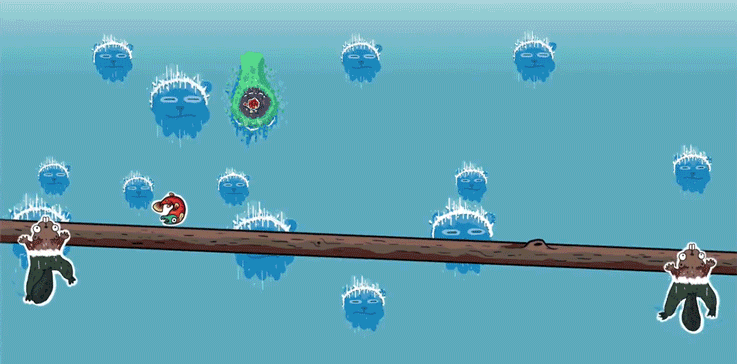
The game itself is projected on a wall on the third floor of Terminal 5, the famous NYC music venue and home of Play NYC. It incorporates the wall’s unique features, namely the raised dots on the wall as well as the shelf at the top, into the gameplay itself.
Exploring The Space
When Jane and I make installation games we always want to make sure that we are working with the space and considering our audience. Games made for public spaces are fundamentally very different from games made to be purchased and played at home. A few points we keep in mind when designing these types of games:
They are far more interesting if they utilize unique characteristics of the space in some way.
They must in some way reward or invite audiences, since the majority of people in the space at any time will not be the ones playing it.
They must be extremely simple, so that any passerby can pick it up and not feel overwhelmed (a problem that is compounded by the presence of an audience).
As always, this does not mean the game has to be easy, but it does need to click right away in order to be successful. It should also offer something in the way of spectacle, so that folks passing by will become interested.
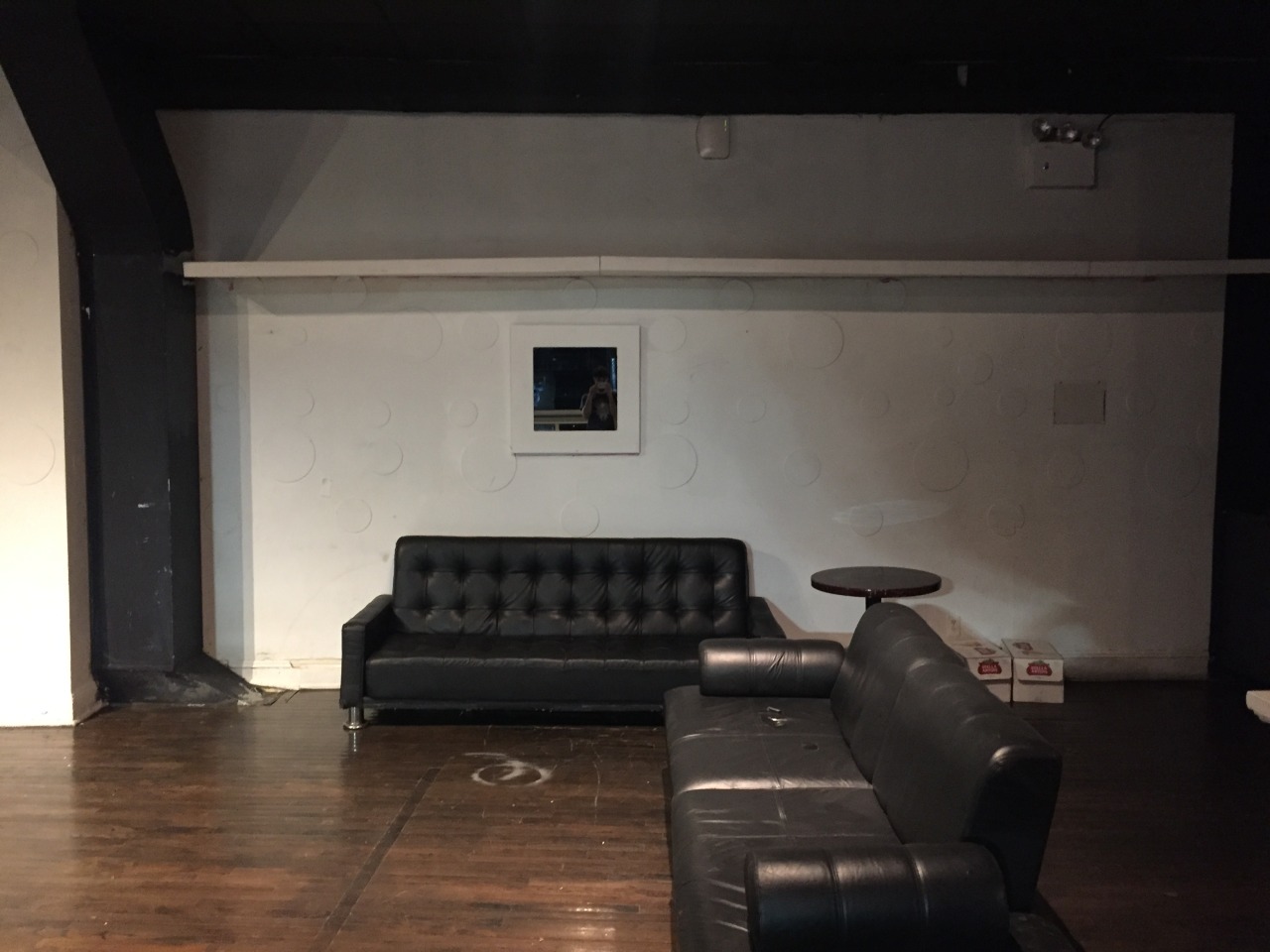
After touring Terminal 5 a few weeks ago (after going to so many concerts there, it was weird to see it empty and with the lights on!), we discovered a wall on the third floor, which (as you can see faintly in the photo above) featured a ton of circles protruding about half an inch from the walls. It was begging for some projection mapping, so we started brainstorming about what we could put there.
Brainstorming
We bounced between a few ideas (pachinko, moon men trying to get home jumping from planet to planet, physically slapping all of these dots as fast as possible) before settling on a two player version of the arcade classic Ice Cold Beer. Ice Cold Beer is a mechanical game similar to Labyrinth, but upright. The player controls two servos which move a metal bar that a pinball rests on. The goal is to move the ball up the board, avoiding the holes, in order to reach one hole marked as the goal. This largely forgotten game has recently gotten some much deserved attention as the inspiration for this year’s TumbleSeed.
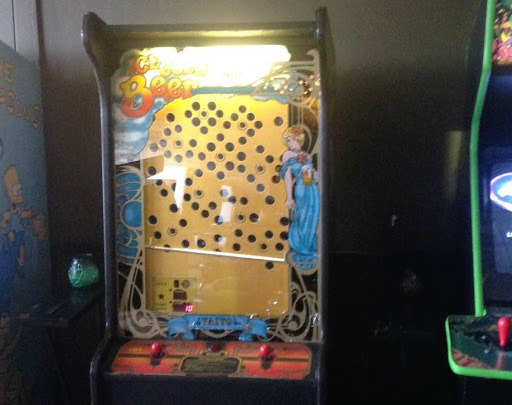
(Ice Cold Beer released by Taito in 1983. Photo by Jeff Axelrod)
We wanted to keep the game as mechanically simple and similar to the original as possible, because installation games by nature need to be learnable in about 5 seconds and support brief play sessions. At the same time, we wanted to bring our own unique spin to the game, separating it from others like it.
Rather than changing up the core mechanics of the Ice Cold Beer genre, we decided to add a social aspect to the game. Both Ice Cold Beer and TumbleSeed are single-player, but given that our game would be played in a crowded space with relative strangers, we decided to turn it into a more communal, two-player experience. This adds a surprising level of difficulty to the game, as players need to quickly communicate difficult maneuvers, rather than relying on one person’s finesse to win a round. By giving players control of either side of the bar, we force them to work together to guide the ball to the goal–and their frantic communication brings lots of life and spectacle to the scene.

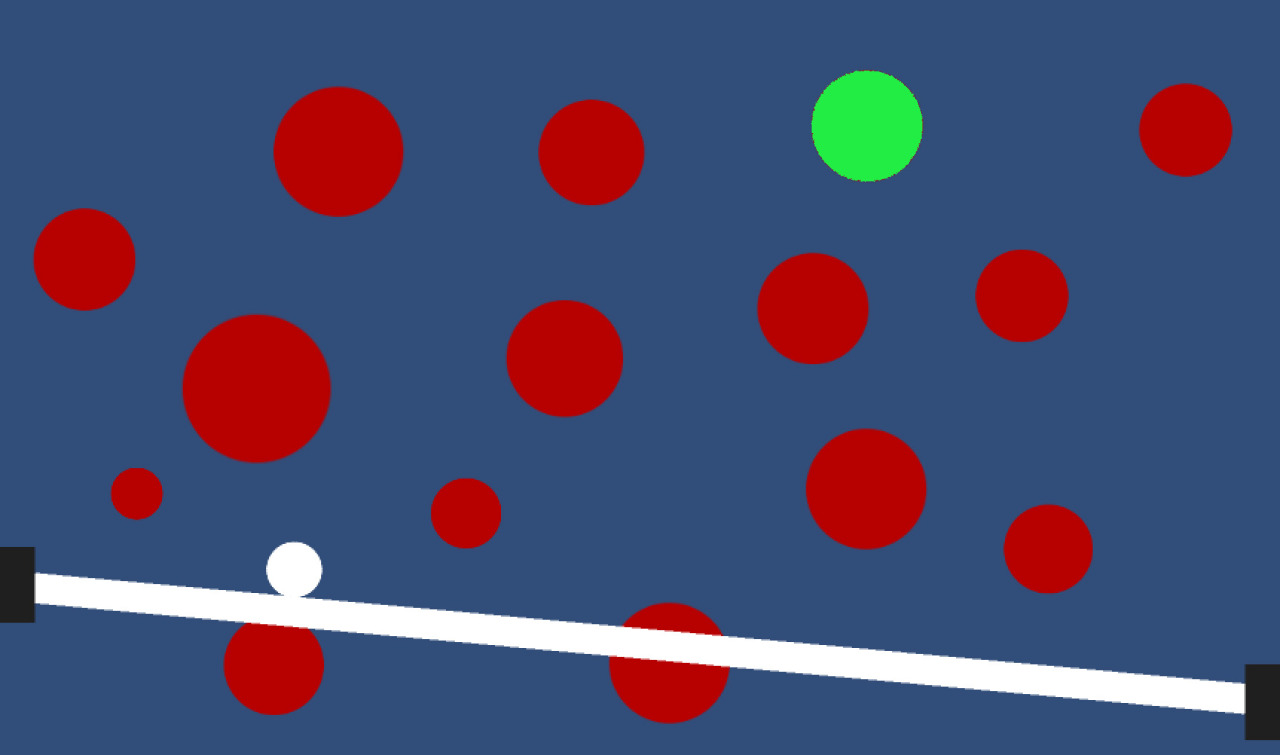
(our initial concept mock-up & a screenshot of our first Unity prototype
Throw in the fishy artwork by Diego and Salmon Roll: The Upstream Team was born!
The Custom Controller
For the controls, we knew we wanted a custom controller for the space–unusual controllers go a long way towards making the experience of playing a game feel special and unique to the space it is in–but we bounced between several ideas before settling on our final design. Initially we wanted to put arcade sticks in enclosures that would be mounted on two columns in the room. We made a ready-to-laser-cut design using makercase.com.
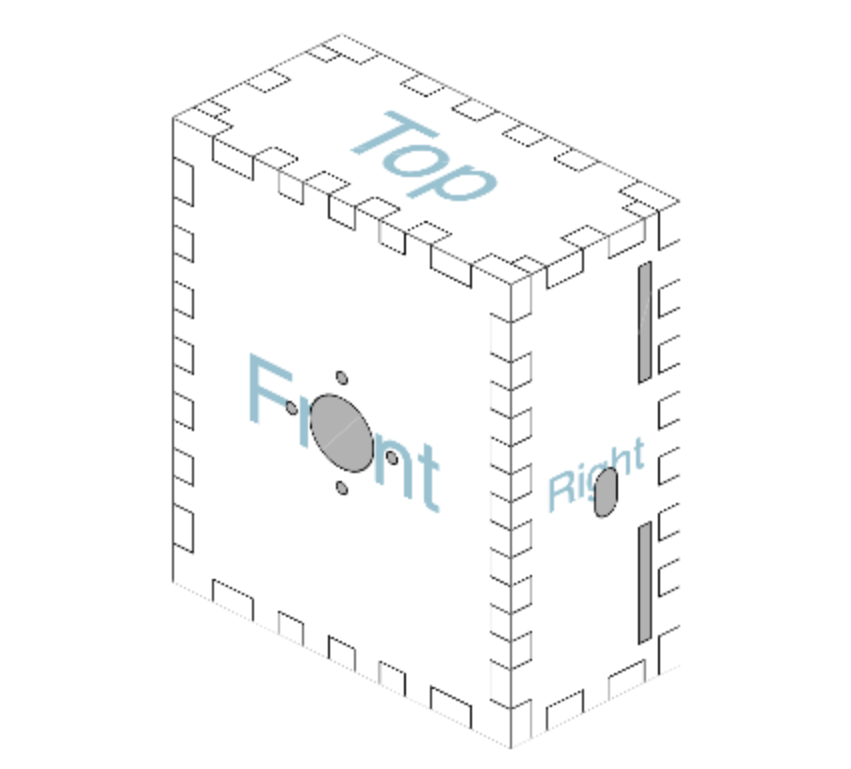
Eventually though, it became apparent that only one column was close enough to where the game would be, so we began to investigate creating a stand for the left controller or even hanging it from the ceiling (a request that was met with an immediate “no” from the venue). As the apparent cost and difficulty of this method was growing, we started to rethink our plan. Since the players were controlling a wooden plank in the game, maybe they could be controlling one in real life too. We tossed around some accelerometer-based ideas, in which players could angle a plank in real life to move the ball, but were not able to get the level of control we needed (both players had to be able to move up and down independently). Finally, we combined the joystick and plank ideas:

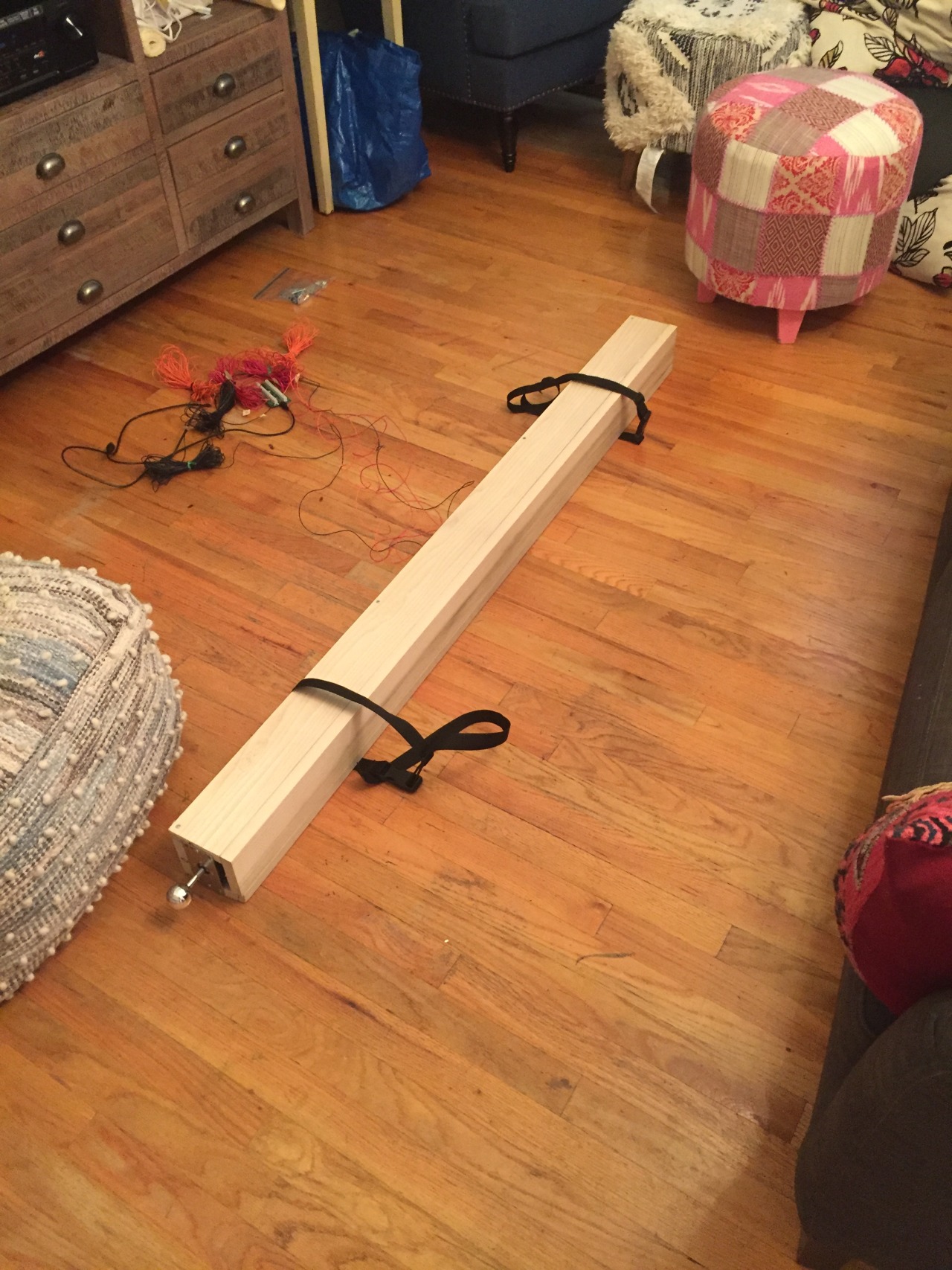
(Top: My quick mock-up of the controller sent to Jane with the message “OK, so here’s my idea. I can’t tell if it is good or very dumb.” Bottom: the nearly finished controller 36 hours later)
The controller for Salmon Roll is a 5 foot long wooden box held by players at either end and with joysticks sticking out of the sides. The joysticks move up and down, allowing the players to control their beavers, but the construction of the box requires players to hold it up together with their free hand. This ensures that it is impossible for any one person to control both joysticks at the same time: the size of the controller itself makes sure that this is a two-player game. The image of the two beavers holding a plank projected on the wall is mirrored by our players holding the controller in the real world!
This was my first foray into physical computer in a few years, and p-comp was never my forte to begin with. It took me about 5x as long as somebody with more experience, but I managed to get the case together, the i-pac wired up and soldered (my poor soldering iron was not in good shape!). By 2am, we were playing the game with the new controller.

Top Shelf
A few days ago, we had our first chance to really test the game out within the space. The bears looked good on the dots, but we realized that we were not properly utilizing the whole wall. The mirror in the center could easily be covered with a sheet, but there was a shelf along the top wall that was begging for some kind of interaction. The easy decision was to put the streak counter (the number of consecutive wins a team had) on the protruding part of the shelf, but there was still the unused space above it.
Since there were no dots above that shelf to use as part of the game, we decided to use the space as a way to reward the players for success. At the beginning of each round a bunch of salmon eggs will fall, appearing to rest on the shelf (represented as 2 physics objects in Unity since one side of real-world shelf sags). When the players win a round, these eggs fall down, bouncing around on the obstacles before the round resets. Its a simple effect but it’s rewarding to see and really helps to blend the digital and physical in the space.

The Art

All of the art in the game is being created by Diego Garcia, whose work on games like Sunburn and Swap Sword Jane and I have both admired for some time. When we approached him, we knew our mechanics but not our theme, and we invited him to have a go at it. He back came to us with 3 ideas, all of which had us giggling. We settled on his salmon theme, and he’s been churning out animations on our extremely tight deadline ever since (two weeks from start to finish for him!).
Here is Diego’s original concept art that sold us on the theme:

Come Play!
This whole process has been a whirlwind. We started working less than a month ago, and we’ll be debuting the final game at Play NYC this weekend. I hope we’ll see you there!
In addition to Salmon Roll, there will be many game exhibits, but of course the part that I’m most excited about is Games Graffiti. As mentioned above, Games Graffiti is the collection of installation games (including Salmon Roll) that will be spread throughout the conference. In out role as co-chairs, we were able to offer commissions to some of the most amazing game dev in artists in NYC, and we’re beyond thrilled to show off work by Jenny Jiao Hsia, Adelle Lin, The Death By Audio Arcade & Ivan Safrin.
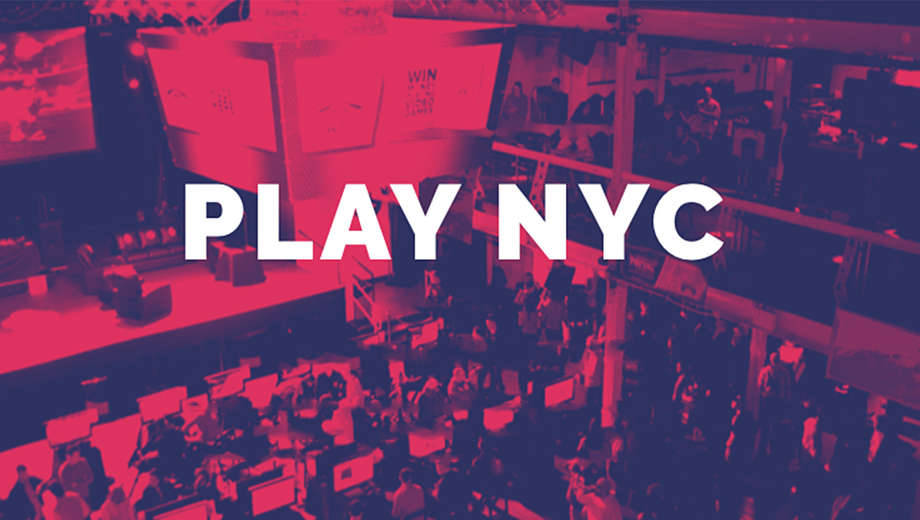
Tickets can be purchased here: http://play-nyc.com/#Tickets
Hopefully I’ll be back with some pictures of the event after this weekend!
Epilogue (added 08/24/2017)
The game and the conference went great! I have a bunch of photos over here: http://andymakesgames.tumblr.com/post/164564148219/
Here are a few choice moments. Photos by Jo Chiang.
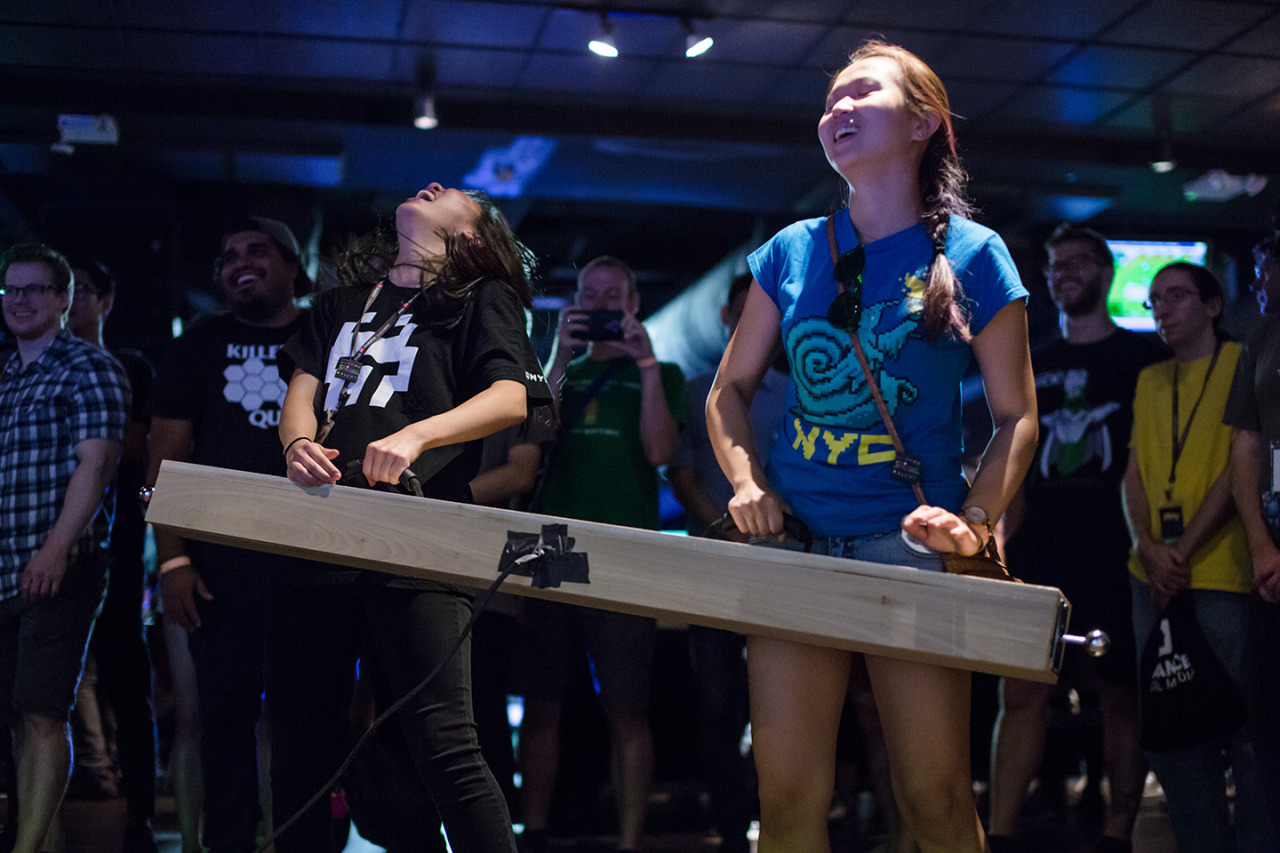

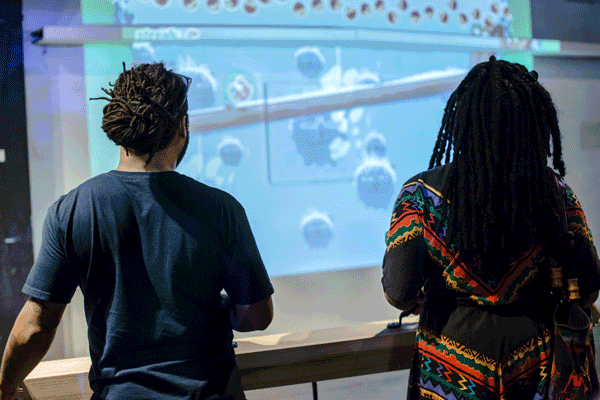
Read more about:
Featured BlogsAbout the Author
You May Also Like









